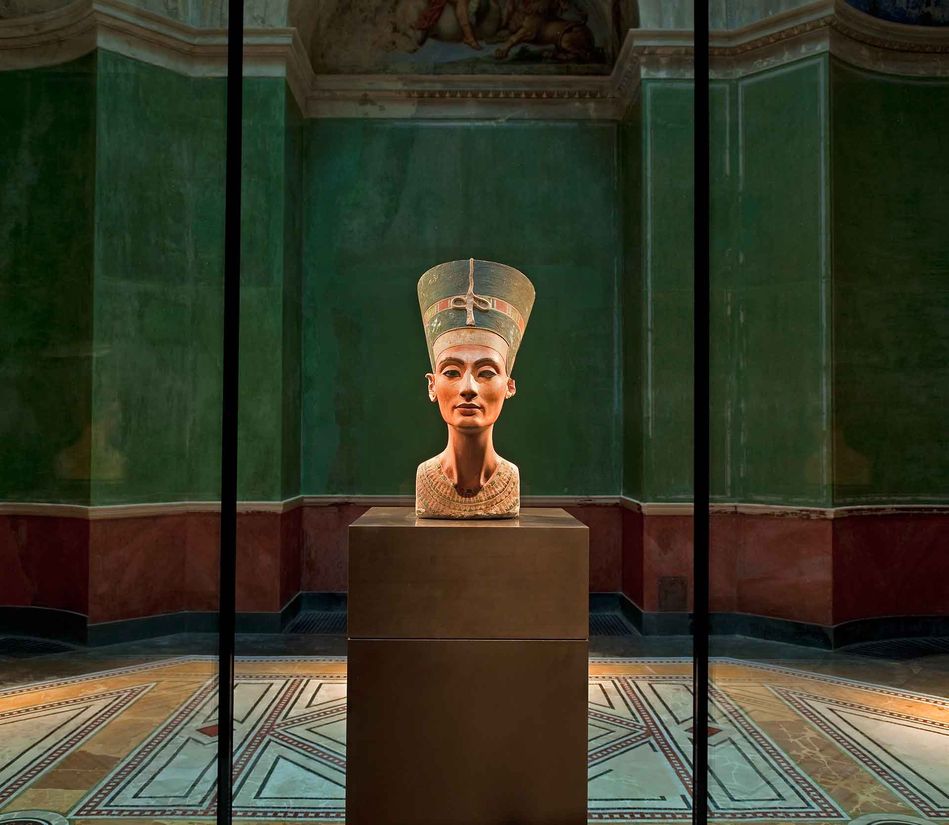 Mawadah fel Zaman: Decolonising and Reimagining Museums
Mawadah fel Zaman: Decolonising and Reimagining Museums


Something as amusing as it is disheartening is how, no matter where I am, no matter how small a city is, or how small a local museum, there always seems to be an Ancient Egyptian exhibit to be found. I remember feeling a deep discomfort waiting in line to see Nefertiti in Berlin and to have a white security guard tell me I couldn’t take a picture of the statue. In the Louvre, me and my brother walked through whole temples and structures we had seen nothing like back home, repeatedly saying: “How did this get here!” to one another. Indeed, how did we get here?
A few months ago, I visited Luxor and Aswan, two cities in Upper Egypt with prominent Ancient Egyptian temples and kingdoms, such as the Temple of Isis. Tour guides would tell us stories of lootings and smugglers and point to places where whole structures once existed. What was particularly disheartening to me was the condition of these cities. Other than agriculture, they depended highly on tourism, specifically tourists from European countries, and with the pandemic, the local economy was suffering. We talk about stolen artefacts but what about the livelihoods affected by imperialism and the museum industry that is a result of that bloody history? To think that museums everywhere are bringing in thousands of visitors and profiting from the reaping of ex-colonies, while those ex-colonies suffer and live in impoverishment still having to depend on the white-gaze, made me reevaluate the way I perceive museums.
The International Council of Museums defines museums as follows: “a non-profit, permanent institution in the service of society and its development, open to the public, which acquires, conserves, researches, communicates and exhibits the tangible and intangible heritage of humanity and its environment for the purposes of education, study and enjoyment.” So, I must ask, how are the major museums of our time benefitting society? What legacy are they preserving and celebrating? Of white supremacy? Of hierarchical and racialised thinking? What does it say when smaller museums or ones in ex-colonies have to make themselves appeal to a western-imperialist gaze in order for their survival? Perhaps museums testify to the fact that there is no “post-colonial” and that we live in a world still infested with the effects (and patterns) of colonialism. Often, what is most disappointing to me about this conversation is centring the stolen artefacts rather than examining the structure that allowed them to be stolen and that continues upholding an imperial hierarchy.
The conversation on decolonisation cannot start and end with objects, but needs to address the often white supremacist, classist, and sexist design of museums and in a larger context, the art world. The Museum Associations’ statement on decolonisation says: “Decolonisation is not simply the relocation of a statue or an object; it is a long-term process that seeks to recognise the integral role of empire in British museums – from their creation to the present day. Decolonisation requires a reappraisal of our institutions and their history and an effort to address colonial structures and approaches to all areas of museum work.” Precisely, decolonisation is a lifelong process that requires commitment, resources, and time, or it runs the risk of becoming another buzzword. We need to to question the decisions these museums are making, such as why certain pieces get long explanations while others get labels such as “Indian man with fruit cart”, why orientalist artworks by white colonisers are highlighted more than art by artists from those regions, why these museums are so interested in POC’s struggle but not in how to help end that struggle, and so much more. I have read dozens of stories from non-white museum employees in the west talking about racist and exploitive experiences they’ve had working in institutions that put on a diverse and liberal front. As we are wary of institutions profiting off of colonisations, we must be twice as cautious of them profiting off our decolonisation movements.
Now I’m not saying museums are inherently harmful. I do think there’s room for reform, or better yet, reimagining what museums can be. It is all very ambitious as it will require not only tangible reparations but a shift in the culture. And that shift has already begun, with hundreds protesting outside the MoMA and pages like @Changthemuseum calling to change, decolonisation is already in the works. I believe even small steps forward such as curators adding more context to labels, exhibitions that acknowledge and challenge these racist hierarchies, returning the sacred objects to their rightful communities, holding these institutions accountable, hiring and creating healthy and progressive spaces for people of colour are important. But what’s more important is having an ongoing conversation about the radical structural changes that need to be made, and strides to make them because we should not have to settle.
Hannah Mason-Macklin says, “(…) and if our government can’t use its power to reconcile with the legacy and the trauma of colonialism, why not museums? As products of colonialism, as community, leaders and as these trusted educational spaces that have power, I believe acknowledgment in museums can lead to social healing and ultimately social reconstruction.” Me too, I believe in a future where museums represent healing and progression rather than ongoing oppression, a future where museums serve communities instead of silencing them, a future where museums are spaces for better understanding one another and the world we share.
Featured image: Courtesy of Neues Museum.


 Mawadah fel Zaman: Decolonising and Reimagining Museums
Mawadah fel Zaman: Decolonising and Reimagining Museums 

